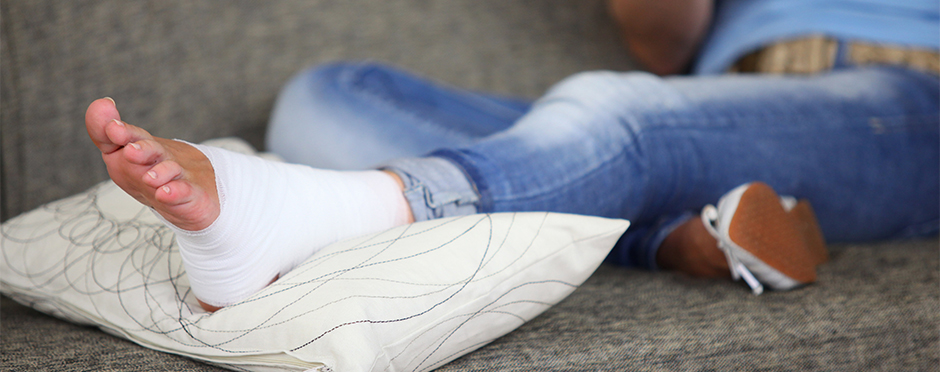
P.R.I.C.E. for an Ankle Injury
Leave a CommentAnkle sprains are one of the most common orthopedic injuries. Common ways to end up with a painful, swollen ankle include:
- A misstep off a curb or stair
- A poor landing from a jump in an athletic activity
- A stumble while wearing high heels
- A slip on a patch of ice
If you cannot bear weight on your ankle after the injury, you should seek evaluation at an immediate care center or emergency department, as you may have a fracture. Otherwise, the recommended first line of treatment for an acute ankle injury is known as “P.R.I.C.E”. This easy-to-remember acronym is a recipe for managing your symptoms effectively in the first few days or weeks after a traumatic ankle injury. Here’s a breakdown with some tips:
“P” is for Protect
In general, the goal is to protect the ankle from further injury and help decrease the pain so that you can walk with a more normal gait pattern. You may wear a brace to support your ankle. A lace-up style brace will provide more stability than a pull-on compression sleeve. Wear suitable, supportive footwear like an athletic sneaker or a sturdy boot; Avoid wearing high heels, flip flops, or sandals, as these do not provide adequate stability to the sides of your ankle. Crutches are appropriate to use if you are significantly limping or unable to bear weight on the injured ankle.
“R” is for Rest
It is normal to have pain and swelling after a new injury, and this will typically be at its worst in the first 7-10 days after the injury. If you cannot walk with a smooth, pain-free pattern, then it is appropriate to rest from repetitive, impact activities such as running, jumping, or athletic practices. Avoiding stressful activities will prioritize healing of the injured area. Doing too much activity too soon will only delay healing.
“I” is for Ice
Apply ice to the painful, swollen area for 10-20 minutes. This can be done as often as 3-5 times per day. Do not place ice directly on exposed skin because this can cause a burn. Instead, use a towel or pillow case as a barrier between your skin and the ice.
“C” is for Compression
The goal of compression is to control the swelling in the area. Too much swelling can affect your ankle’s range of motion and cause it to feel stiff. An Ace bandage, compression sleeve, or compression sock are effective at providing compression. The compression should feel tight, like a “hug,” but should not be so taut that it creates numbness or tingling, or so that your skin is becoming pale in the surrounding area. You can use compression when you are upright and moving around during the day. You do not need to use compression when you are sleeping. If using an Ace bandage, make sure to start down by your toes and work up to your mid-shin using a fishbone pattern.
“E” is for Elevation
Try to keep your injured ankle at or above the heart level as much as possible when resting. This will aid the swelling in returning to your circulatory system.
Dealing with an ankle injury? Come see us!
Physical therapists and athletic trainers are experts on the principles of P.R.I.C.E. If you are dealing with an ankle injury, a physical therapist is the best professional to help you recover range of motion, strength balance, and return to your desired activities. Schedule a free assessment and have our team of healthcare professionals take the first look. Free assessments are available both in-clinic and virtually through our telehealth platform.
*Per federal guidelines, beneficiaries of plans such as Medicare, Medicaid, Tricare, VHA and other federally funded plans are not eligible for free assessments.
The Athletico blog is an educational resource written by Athletico employees. Athletico bloggers are licensed professionals who abide by the code of ethics outlined by their respective professional associations. The content published in blog posts represents the opinion of the individual author based on their expertise and experience. The content provided in this blog is for informational purposes only, does not constitute medical advice and should not be relied on for making personal health decisions.
